Have you ever found yourself unsure about a young tree’s future? Me too. As young pines transition from trunk development to branch development, the main focus is on slowing the tree down and increasing branch density. I begin this process by decandling the tree and removing extraneous branches. I don’t need a final plan at this point, but the more I know about the tree’s future, the better.

10-year-old black pine – before decandling
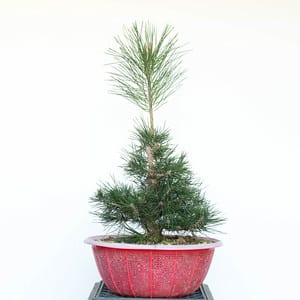
After removing the spring growth
Next, I thinned out branches where three or more emerged from the same spot and shortened those that extended beyond the tree’s basic outline.
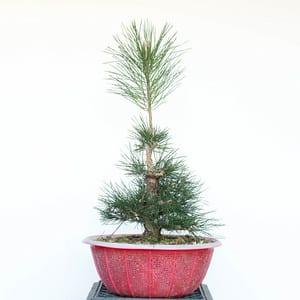
After removing unnecessary branches
As the foliage was still fairly dense in some areas, I removed extra needles to allow more light and air to reach the tree’s interior.
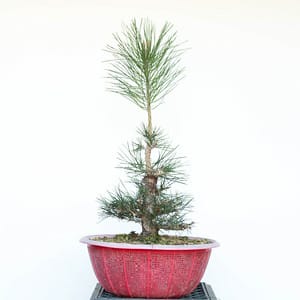
After removing needles where the foliage was dense
I left the long branch on top as I haven’t completely decided what I want to do with the trunk. I’ll revisit the decision this fall.
I followed the same process of removing spring growth and thinning unnecessary branches on a number of 10-year-old trees.
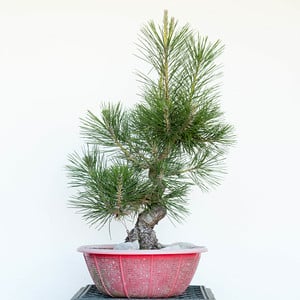
Black pine – before
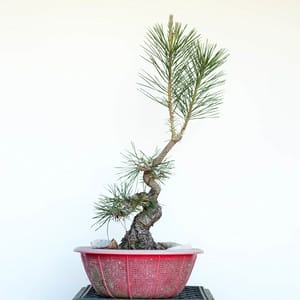
After decandling and cutback
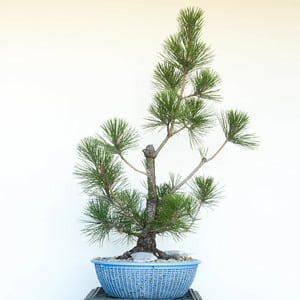
Before
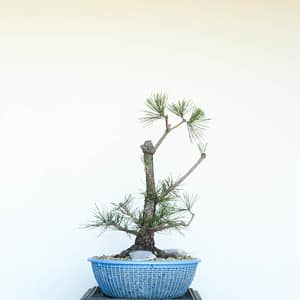
After
One of the more fun trees from this batch was created by letting the roots grow through course rocks for several years (See “Repotting 1 year-old black pines” for details). Here’s the tree before decandling and cutback.
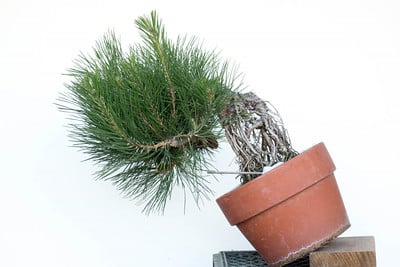
10-year-old exposed root black pine
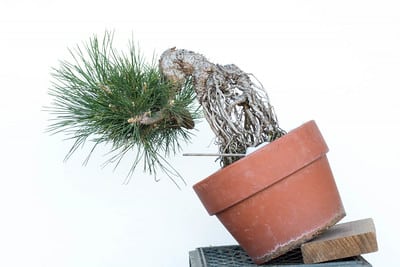
After decandling
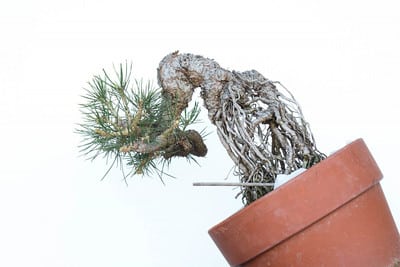
After cutback – front #1
The other side of the tree could also provide a compelling front.
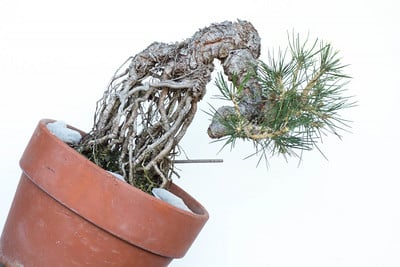
Front #2
I’ll select one of these fronts or the other when I repot the tree this winter.
Subscribe to Bonsai Tonight
New Posts Delivered Every Tuesday and Friday
zack Clayton says
I really like front #2 for the exposed root pine. It shows off the branch to much better effect. Looking at front #1 before I scrolled down I was trying to figure out what the weird growth back there was. I also think the bark is more interesting on front #2. A sweet tree in any case.
Paul Parisi says
I have 8 young 2 needle pine. They rang from3 to 12 years old (estimates). I have been told that a professor tried to plant an area called “Dog Town Common” with Japanese red pine so I am assuming that’s what they are but they do seem to be more flexible.
I have tried to follow your treatment of pines but it does scare the hell out of me. I keep thinking How can they survive. So when I do decandle and needle pluck I also pray.
Arleigh Berg says
Are you doing this pruning work now (as in – “at this current point in the growing season”)?
Mills Goodlett says
Very nice guide and easy to follow – add some progressive close-ups. Are you developing any white pines? I could seriously use some pointers on my first acquisition of a JWP grafted to a black pine. After receiving it, I repotted to a larger pot and almost lost it due to too much and later too little water. Two limbs have as yet to put out any new growth. I am just now getting the watering in check and will probably leave it alone until next year, when hopefully it will be much healthier. It should be pretty wild by then – and in need of some attention.
Jonas Dupuich says
Hi Mills – good question about white pines. I don’t have many white pines so I have yet to write much about them. It sounds like you’ve learned some of the more important lessons about them – how tricky it can be to get the watering right. Leaving white pine alone until it gets stronger sounds like a good idea. If you’re curious, here’s the one somewhat relevant post on the topic: http://bonsaitonight.com/2009/08/28/restoring-a-white-pine/
Josef Ulrich says
I see fertilizer bags on the surface of the substrate. Since needle length is not a concern at this point would you fertilize heavily to aid in development or would that cause excessive node length?
Jonas Dupuich says
Hi Josef – good question. I typically remove fertilizer after decandling to ensure that the summer growth isn’t too strong or the internodes too long. When the summer shoots are very vigorous, I’ll often remove them in fall and leave the smaller shoots in place. On occasion, I’ll continue fertilizing if the tree isn’t as strong as it might be. For the trees shown here I removed the fertilizer bags before returning the trees to the bench.
@Arleigh – I wrapped up decandling in mid-July this year. That’s pretty late for Northern California and I only decandled a small number of young and vigorous trees that late. I decandled the more developed between the beginning of June (larger trees) through the first week of July (shohin).
bonsaibible says
Nice little guide you’ve got going here, I love it how you show many examples to really drill in your points,
zack Clayton says
Jonas, It has been 5 years now since that white pine post. Can you give us an update? It would be interesting and informative to see what has happened with the tree.
Jonas Dupuich says
Hi Zack – I’ve haven’t provided much of an update as there’s actually not much news to report. The tree is as vigorous now as it was then, and it looks about the same. If I can elicit significant change, I’ll be sure to share the results.
Cade Sundstedt says
Have you ever tried coastal redwoods? I have three 3 year olds right now, but am unsure of how to proceed with them.
Jonas Dupuich says
Hi Cade – thanks for the note. Most of the redwood bonsai I’ve seen have been developed from collected material. If the trees are 3 years old, I’d guess the main thing is to encourage significant growth until the trunk reaches the desired size at which point the focus can switch to the branches. A forum like bonsaistudygroup could be a great resource for more specific information. Hope this helps!
Cade Sundstedt says
Thanks! I’ll check it out.
Mills Goodlett says
Jonas, thanks for the link to your restoration project – very interesting. Climate may also become one of my problems. The JWP, being a mountain pine, may not acclimate very well to Columbia, SC, where we have daytime temperatures of 95 to 100+ degrees with extremely high humidity in the summertime. We sometime refer to it as “the screen door to Hell”!